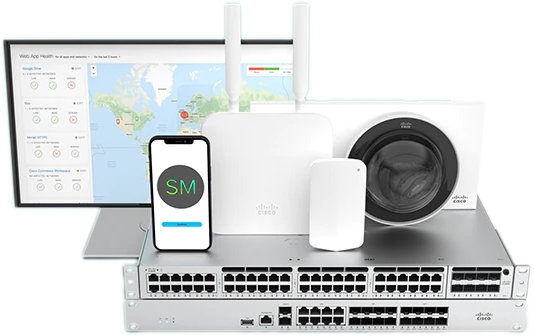 There's more reason than ever before to standardize on a single hardware vendor for your networking equipment!
There's more reason than ever before to standardize on a single hardware vendor for your networking equipment!
In decades past, a lot of businesses could "get away" with mix-and-matching hardware from different vendors and still end up with a functional network. This meant they could simply select hardware as needed, at the moment, based on what's most affordable across all of the IT equipment brands.
Like we've discussed elsewhere, this small amount of up-front savings is now swallowed up by all the problems that can come from multi-vendor installations. On the flip side, single-vendor sourcing can improve your network, inprove security, reduce costs, and make life far easier on your IT administrators.
5 Reasons A Single Hardware Vendor Makes Networking Sense
1 - Better Planning and Design
Every major vendor can now provide roadmaps to future upgrades, including often giving glimpses of upcoming technologies they'll have on offer in a year or two. It means your IT architects have rock-solid information about both what the network can do today, and what it could be doing after future upgrades.
IT Admins working with multiple hardware vendors usually end up having to spend as much time resolving compatibility issues as actually building the network. Multiple vendors introduce a lot of uncertainty, and provide few clear-cut solutions.
2 - Improved Network Monitoring
The software systems used by vendors like Cisco allow for simple single-console administration for the entire network... but only for units using their software. Compatibility for other vendors will be limited at best, and may even require direct command-line control rather than using the GUI.
This can make it extremely difficult for companies without a single hardware vendor to effectively administrate their network. It certainly makes far more work for IT, with no real benefits to offset the effort.
3 - Faster Incident Resolution
Likewise, if it's more difficult for admins to control a multi-vendor network, it's also going to be more difficult for them to deal with issues when they arise. If the network software cannot see or talk to every device on the network, that creates 'blind spots' in the administration which are vulnerable to attack.
If one of these devices fails, or becomes compromised, it will take far longer to find the source of the problem. However, this is a case where often minutes matter, much less hours or days.
Any delay in resolving network incidents will cost you more money, period. A single hardware vendor greatly improves response speeds.
4 - Standardized Security
Merely maintaining standard security policies across a network becomes far more challenging in a multi-vendor environment. Often, it requires direct reconfiguration of individual units, which slows down deployment and introduces new opportunities for human error.
On the other hand, a system standardized on a single operating system can have "one click" security policy updates. Make the changes, hit 'save', and they automatically propagate to every attached device... but only if it's from the same vendor.

5 - Package Deals and Discounts
Let's not forget the basic economies of scale going on here as well. A single vendor is going to have a lot more reason to offer you package deals, discounts, or extended service packages if they're bringing you into their ecosystem on a company-wide scale.
If they support refurbished hardware, you could even get significant discounts well beyond what you could get from stores. A lease and trade in model of network upgrades is viable, and many businesses find this to be the most cost-effective way of maintaining a growing network.
Have You Picked A Vendor Yet?
If not, it's time to start thinking about it. You can 'get by' with an ad-hoc multi-vendor network, but it's going to be more costly and less effective. Standardizing on a single hardware vendor makes far more long-term sense.
Need more advice? Contact Hummingbird Networks and we can evaluate your needs to suggest the right vendor for your needs!
Images Courtesy of: https://www.flickr.com/photos/epublicist/8718062700/sizes/l/in/photostream/ and https://www.flickr.com/photos/86530412@N02/7932571974/sizes/l/in/photostream/











